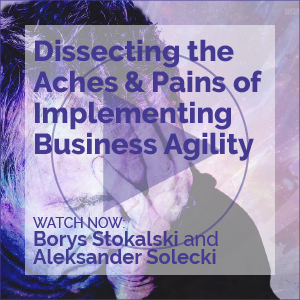SOA: How to Work It and How Well It Works
There is currently a lot of excitement over SOA, which many vendors and analysts are talking up as the next big thing in enterprise IT. Although consensus is lacking as to its exact nature, there is a strong feeling that an SOA is a good thing to have and that organizations should be making plans to implement one. In fact, depending on which definition you go by, quite a few organizations may already have an SOA up and running.
Business Direction Is Critical to SOA Success
The business principle behind SOA is to build up a collection of small, independent services that can be quickly and easily combined in a variety of ways into different, higher-level business services. This is what gives an enterprise the agility to offer new services and to respond to competitive pressures.
The Business Value of a Service-Oriented Approach
I was recently presenting some recommendations on architectural direction and strategy to senior staff and one of the business line managers asked a very good question: "What value does this service-oriented architecture approach give me?" Specifically, he meant business value -- or in other words, put the IT recommendations into business terms. This is always a challenge for IT, but I think I hit upon a good explanation with the following scenario.
Service-Oriented Architecture: Excitement, Value, and Confusion
Service-oriented architecture (SOA) has been on the IT buzzword bestsellers' list for as long as any other phrase I can remember. Over the past 10 years, there have been prominent examples of enterprises that have successfully implemented SOAs and have achieved substantial advantages, including reduced costs and improved competitiveness. Unfortunately, such examples are not commonplace because implementing a successful SOA is difficult. However, when successful, the promise and business benefits of SOA are undeniably compelling.
Service-Oriented Architecture: Excitement, Value, and Confusion
Service-oriented architecture (SOA) has been on the IT buzzword bestsellers' list for as long as any other phrase I can remember. Over the past 10 years, there have been prominent examples of enterprises that have successfully implemented SOAs and have achieved substantial advantages, including reduced costs and improved competitiveness. Unfortunately, such examples are not commonplace because implementing a successful SOA is difficult. However, when successful, the promise and business benefits of SOA are undeniably compelling.
Connecting IT to Business Strategy: Part I
Connecting IT to Business Strategy: Part I
Connecting IT to Business Strategy: Part I
Connecting IT to Business Strategy: Part I
Is Sarbanes-Oxley Good or Bad for IT?
Is Sarbanes-Oxley Good or Bad for IT?
To Boost IT's Value, Improve Management Processes
To Boost IT's Value, Improve Management Processes
What It Takes to Be a Great Enterprise Architect
To be a great architect, you need talent. But greatness is accorded to those responsible for great architectures, those that stand out from others in the value they afford. This Executive Report explores what it takes to be a great enterprise architect as well as the exciting opportunity that architects have in shaping enterprises that stand out among the organizational landscape.
What It Takes to Be a Great Enterprise Architect
In the accompanying Executive Report , we explore what it takes to be great in the context of a historical story. It is the story of James Madison and the creation of the US Constitution. We tell this story in narrative form, giving you the opportunity to discover its lessons for yourself and providing you with a tremendous story to use as you shape how the architect's role is perceived in your organization.








